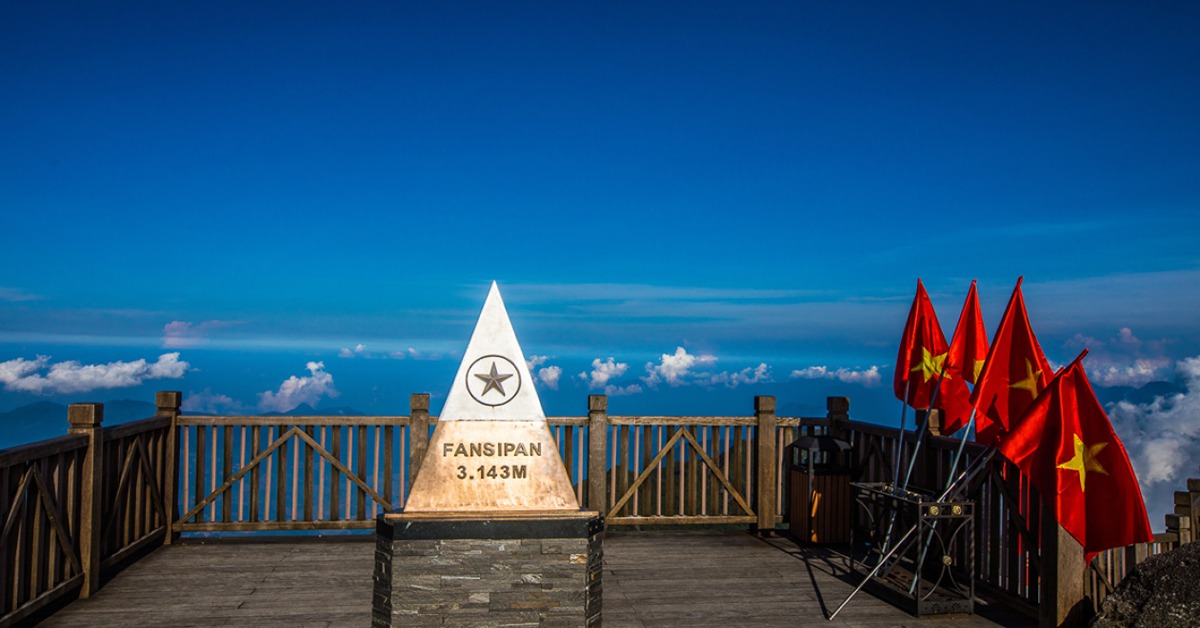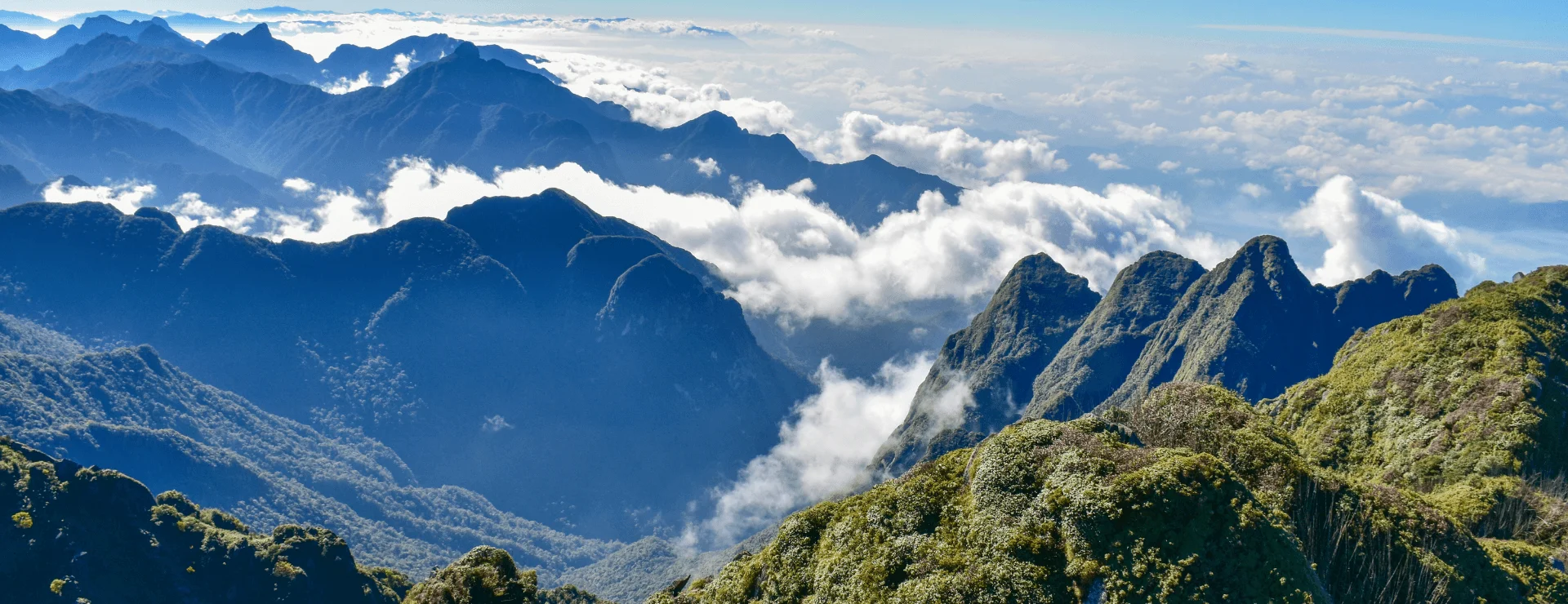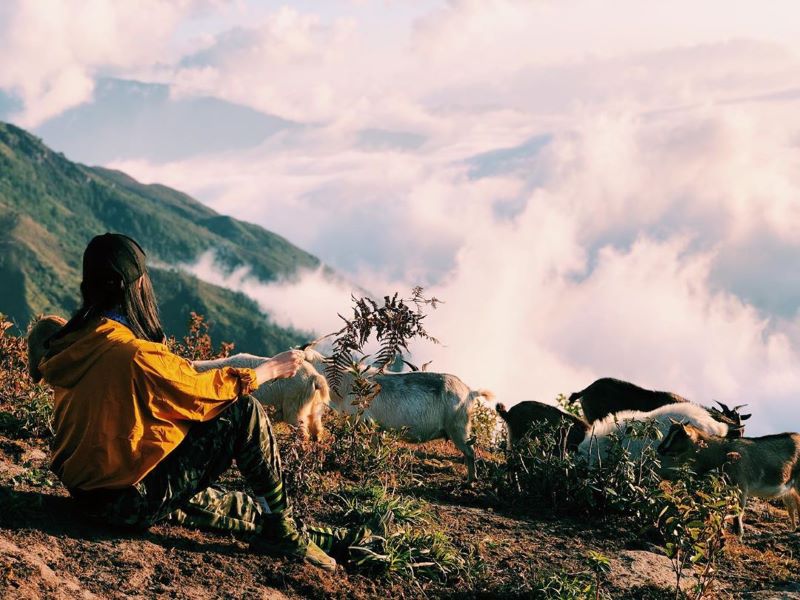
TOP 10 Highest Vietnam mountains: A Trekker’s Paradise
Vietnam, a land of stunning landscapes, offers a diverse range of mountains, from the towering peaks of the Hoang Lien Son Range to the serene beauty of the Truong Son Mountains. Let’s explore the top 10 Vietnam mountains that beckon adventure enthusiasts from around the world.

Why Does Vietnam Have So Many Mountains? The advent of Vietnam mountains
Vietnam’s mountainous terrain is primarily due to its geographical location on the Indochinese Peninsula. The country is part of the Southeast Asian mountain range, which stretches across several countries. This geological formation, combined with tectonic plate movements over millions of years, has resulted in the creation of numerous mountain ranges throughout Vietnam.
The mountains in Vietnam are not only diverse in their landscapes but also play a crucial role in the country’s ecology, climate, and culture. They are home to a wide range of flora and fauna, including many endangered species. Additionally, the mountains have influenced Vietnam’s history, serving as natural barriers and strategic locations for defense.
Some of the most famous mountain ranges in Vietnam include the Hoang Lien Son, Truong Son, and Annamite ranges. These mountain ranges offer stunning scenery, diverse ecosystems, and opportunities for adventure activities like trekking, climbing, and camping.
TOP 10 Vietnam mountains: A Trekker’s Paradise

Vietnam, with its diverse landscapes, offers a plethora of stunning mountain ranges for adventure enthusiasts. Here are the top 10 mountains in Vietnam, each with its unique charm and challenges:
1. Fansipan Vietnam mountains
- Location: Sa Pa, Lao Cai Province
- Highlights: The highest peak in Indochina, offering breathtaking views of the surrounding valleys and mountains.
- Lowlights: Challenging trek, especially for beginners.
- Tips: Hire a local guide, prepare for altitude sickness, and pack warm clothing.
- Service Providers: Numerous local tour operators offer guided treks to Fansipan.
2. Pu Si Lung Vietnam mountains
- Location: Lai Chau Province
- Highlights: A challenging peak with stunning panoramic views of the Hoang Lien Son Range.
- Lowlights: Requires advanced trekking skills and physical fitness.
- Tips: Hire an experienced guide and be prepared for unpredictable weather.
- Service Providers: Local trekking agencies in Sapa can arrange guided tours.
3. Ta Xua Vietnam mountains
- Location: Son La Province
- Highlights: A picturesque mountain range with stunning cloud formations and terraced rice fields.
- Lowlights: Challenging terrain and remote location.
- Tips: Hire a local guide and be prepared for a challenging trek.
- Service Providers: Local trekking agencies in Sapa can arrange guided tours.
4. Ba Vi Mountain
- Location: Hanoi Province
- Highlights: A popular day trip destination from Hanoi, offering stunning views of the city and surrounding countryside.
- Lowlights: Can be crowded on weekends and holidays.
- Tips: Visit during the week for a more peaceful experience.
- Service Providers: Local tour operators offer day trips to Ba Vi Mountain.
5. Bach Ma Mountain
- Location: Thua Thien Hue Province
- Highlights: Beautiful waterfalls, lush forests, and stunning panoramic views.
- Lowlights: Can be crowded during peak season.
- Tips: Wear comfortable shoes and bring plenty of water.
- Service Providers: Local tour operators in Hue offer guided tours to Bach Ma Mountain.
6. Marble Vietnam mountains
- Location: Da Nang City
- Highlights: Five marble mountains, each with its own unique caves, pagodas, and stunning views.
- Lowlights: Can be crowded during peak season.
- Tips: Wear comfortable shoes and be prepared to climb stairs.
- Service Providers: Local tour operators in Da Nang offer guided tours to the Marble Mountains.

7. Langbiang Mountain
- Location: Lam Dong Province
- Highlights: Beautiful scenery, including waterfalls, pine forests, and stunning views of the surrounding area.
- Lowlights: Can be challenging for inexperienced hikers.
- Tips: Hire a local guide to help you navigate the trails.
- Service Providers: Local tour operators in Da Lat offer guided tours to Langbiang Mountain.
8. Pu Ta Leng Vietnam mountains
- Location: Lai Chau Province
- Highlights: A challenging peak with stunning views of the Hoang Lien Son Range.
- Lowlights: Requires advanced trekking skills and physical fitness.
- Tips: Hire an experienced guide and be prepared for unpredictable weather.
- Service Providers: Local trekking agencies in Sapa can arrange guided tours.
9. Chua Chan Mountain
- Location: Dong Nai Province
- Highlights: A sacred mountain with beautiful temples and pagodas.
- Lowlights: Can be crowded on weekends and holidays.
- Tips: Wear comfortable shoes and be prepared to climb stairs.
- Service Providers: Local tour operators in Ho Chi Minh City can arrange day trips to Chua Chan Mountain.
10. Ba Den Mountain
- Location: Tay Ninh Province
- Highlights: A sacred mountain with a cable car ride to the top and stunning views of the surrounding countryside.
- Lowlights: Can be crowded on weekends and holidays.
- Tips: Wear comfortable shoes and be prepared to climb stairs.
- Service Providers: Local tour operators in Ho Chi Minh City can arrange day trips to Ba Den Mountain.
TOP 10 HIGHEST VIETNAM MOUTAINS IN ORDER OF HEIGHT
Here are the top 10 highest mountains in Vietnam, listed in descending order of height:
- Fansipan (3,143m): The highest peak in Indochina, located in Sa Pa, Lao Cai Province.
- Pu Si Lung (3,083m): A challenging peak in Lai Chau Province.
- Putaleng (3,049m): Another stunning peak in Lai Chau Province.
- Bach Moc Luong Tu (3,046m): A challenging peak in Yen Bai Province.
- Pu Ta Leng (3,028m): A beautiful mountain in Lai Chau Province.
- Ta Lien Son (2,996m): A majestic peak in Lai Chau Province.
- Ta Chi Nu – Pu Luong (2,979m): A stunning mountain range in Yen Bai Province.
- Po Ma Lung (2,967m): A challenging peak in Lai Chau Province.
- Nhieu Co San (2,965m): A beautiful mountain in Lao Cai Province.
- Lung Cung (2,913m): A challenging peak in Yen Bai Province.
Tips for Exploring Vietnam’s Mountains

Vietnam’s mountainous regions offer stunning landscapes, diverse wildlife, and unique cultural experiences. Here are some tips to help you make the most of your mountain adventure:
1. Choose the Right Destination:
- For beginners: Consider less challenging mountains like Ba Vi or Fansipan.
- For experienced trekkers: Explore more demanding peaks like Fansipan or Pu Si Lung.
2. Hire a Local Guide for Vietnam mountains:
- Local expertise: A knowledgeable guide can provide insights into the local culture, history, and ecology.
- Safety: They can help you navigate challenging trails and avoid potential dangers.
3. Pack Appropriately:
- Comfortable clothing: Wear lightweight, breathable clothing that can withstand changes in weather.
- Sturdy footwear: Good hiking boots with ankle support are essential.
- Essential gear: Bring a backpack, water bottle, hat, sunscreen, insect repellent, and a first-aid kit.
- Warm clothing: Temperatures can drop significantly at higher altitudes, so pack warm layers.
4. Prepare for Physical Challenges:
- Fitness: Train regularly to improve your physical fitness, especially if you’re planning a challenging trek.
- Altitude sickness: Be aware of the symptoms of altitude sickness and take precautions to prevent it.
5. Respect the Environment:
- Leave No Trace: Pack out all trash and avoid disturbing the natural environment.
- Stay on designated trails: Avoid trampling on vegetation and damaging the ecosystem.
- Respect local customs and traditions: Be mindful of local customs and traditions, especially when visiting villages and sacred sites.
6. Choose the Right Season for exploring Vietnam mountains:
- Dry season (November to April): Ideal for trekking and hiking due to clear skies and dry conditions.
- Rainy season (May to October): Can be challenging for trekking, but offers lush greenery and fewer crowds.
7. Safety First:
- Inform someone of your plans: Let someone know your itinerary, especially if you’re trekking alone.
- Be aware of potential dangers: Watch out for wildlife, steep cliffs, and sudden weather changes.
- Emergency Preparedness: Carry a first-aid kit and a mobile phone with emergency contacts.
By following these tips, you can have a safe and enjoyable experience exploring Vietnam’s stunning mountains. Remember to respect the environment and the local communities to ensure a sustainable and positive impact on the region.
See also:
